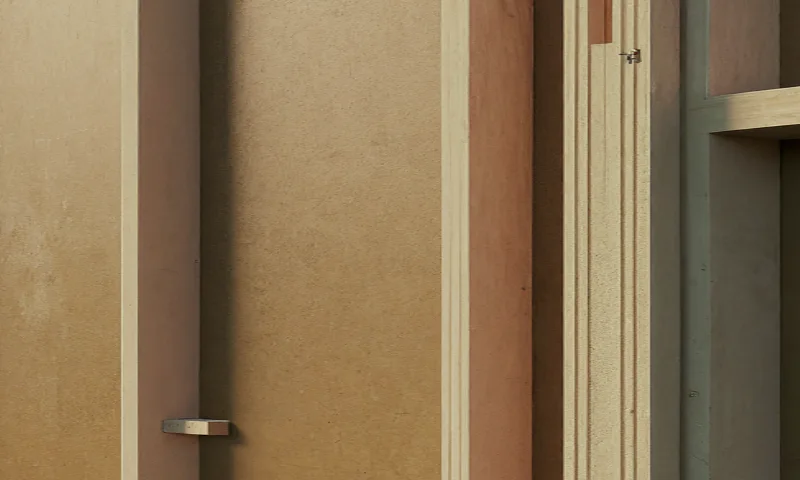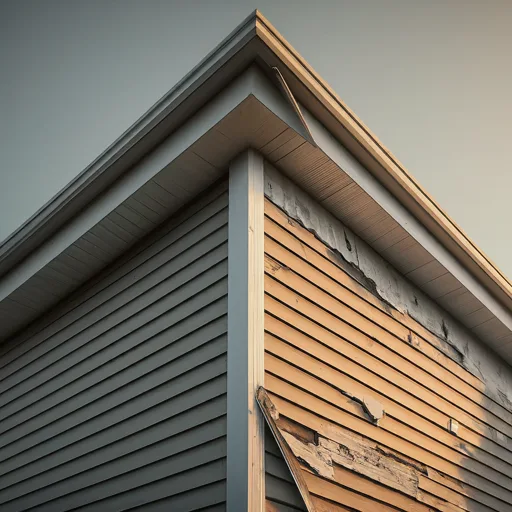Is Cardboard Sheathing Good to Use on a House?
Cardboard sheathing, also known as fiberboard or cellulose sheathing, is a building material used in residential construction. It’s made from wood fibers and is often used as an exterior wall sheathing material.
While it is a less common choice compared to other sheathing materials like plywood and oriented strand board (OSB), it has its own set of advantages and disadvantages.
We will explore whether cardboard sheathing is a good option for your house, taking into consideration factors like cost, durability, environmental impact, and performance.
You'll Learn About
What is Cardboard Sheathing?

Composition and Characteristics
Cardboard sheathing is made from wood fibers that are compressed and bonded together to form a rigid board. It typically comes in 4×8 foot sheets and is about 1/2 inch thick. The material is lightweight and easy to handle, making it convenient for installation.
Common Uses
- Exterior Wall Sheathing: Provides a base layer for siding and adds structural support.
- Soundproofing: Due to its density, it can help in reducing sound transmission.
- Insulation: Offers some insulating properties, although it is not as effective as dedicated insulation materials.
Advantages of Cardboard Sheathing
Cost-Effective
Lower Material Costs
Cardboard sheathing is generally less expensive than other types of sheathing, such as plywood or OSB. This makes it an attractive option for budget-conscious builders.
Easy Installation
The lightweight nature of cardboard sheathing reduces labor costs as it is easier to handle and install compared to heavier materials. This can result in faster construction times and reduced labor expenses.
Environmentally Friendly
Recyclable Material
Cardboard sheathing is made from recycled wood fibers, which makes it a more sustainable choice compared to materials that use virgin wood. Additionally, it is recyclable at the end of its life cycle.
Lower Carbon Footprint
The production process of cardboard sheathing tends to have a lower carbon footprint compared to other sheathing materials, contributing to more environmentally friendly construction practices.
Insulation and Soundproofing
Thermal Insulation
While not a replacement for dedicated insulation materials, cardboard sheathing does offer some thermal insulating properties. This can contribute to improved energy efficiency in the home.
Sound Dampening
The dense fiberboard material helps in reducing sound transmission, providing better soundproofing compared to some other types of sheathing.
Disadvantages of Cardboard Sheathing

Durability Issues
Moisture Sensitivity
One of the significant drawbacks of cardboard sheathing is its sensitivity to moisture. When exposed to water, it can absorb moisture, swell, and deteriorate over time. This makes it a less suitable choice for areas prone to high humidity or frequent rainfall.
Structural Weakness
Compared to plywood or OSB, cardboard sheathing is not as strong or rigid. This can limit its use in situations where higher structural support is required.

Limited Structural Support
Cardboard sheathing does not provide the same level of structural support as plywood or OSB. This means that in some applications, additional reinforcement may be necessary, which can offset the cost benefits.
Fire Resistance
Cardboard sheathing is not as fire-resistant as some other materials. While treatments are available to improve fire resistance, this adds to the overall cost and complexity of using cardboard sheathing.
Comparison with Other Sheathing Materials
| Feature | Cardboard Sheathing | Plywood | OSB |
|---|---|---|---|
| Cost | Low | High | Moderate |
| Durability | Low | High | High |
| Moisture Resistance | Low | High | Moderate to High |
| Structural Support | Moderate | High | High |
| Fire Resistance | Low (without treatment) | Moderate to High (with treatment) | Moderate (with treatment) |
| Environmental Impact | Low (recycled material) | Moderate (sustainable sources) | Moderate (sustainable sources) |
| Ease of Installation | High | Moderate | Moderate |
| Insulation | Moderate | Low | Low |
| Soundproofing | High | Low | Low |
Situations Where Cardboard Sheathing May Be Suitable
Budget-Conscious Projects
For projects with tight budgets, cardboard sheathing can be an attractive option due to its lower cost and ease of installation.
Temporary Structures
In cases where the building is intended to be temporary or short-term, the lower durability of cardboard sheathing may not be a significant concern.
Dry Climates
In areas with low humidity and minimal rainfall, the moisture sensitivity of cardboard sheathing is less of an issue, making it a more viable option.
Interior Applications
Cardboard sheathing can be used effectively in interior applications where it is protected from the elements and can provide soundproofing and some insulation benefits.
Situations Where Cardboard Sheathing May Not Be Suitable
High-Moisture Areas
In regions with high humidity or frequent rainfall, the moisture sensitivity of cardboard sheathing makes it a poor choice.
Structural Demands
For buildings that require high structural support, such as multi-story homes or those in areas prone to high winds, stronger materials like plywood or OSB are recommended.
Long-Term Durability
For long-term projects where durability is a primary concern, the limited lifespan and susceptibility to damage of cardboard sheathing may not meet the necessary standards.
Conclusion
Cardboard sheathing offers a cost-effective and environmentally friendly option for certain building projects. However, its limitations in terms of durability, moisture resistance, and structural support must be carefully considered.
For budget-conscious or temporary projects in dry climates, cardboard sheathing can be a suitable choice. For more demanding applications, other materials like plywood or OSB may be more appropriate.
Ultimately, the decision to use cardboard sheathing should be based on a thorough evaluation of the specific needs and conditions of your building project.
